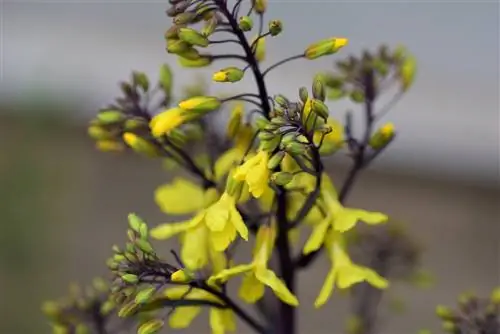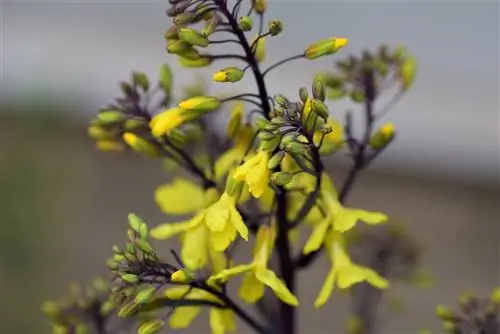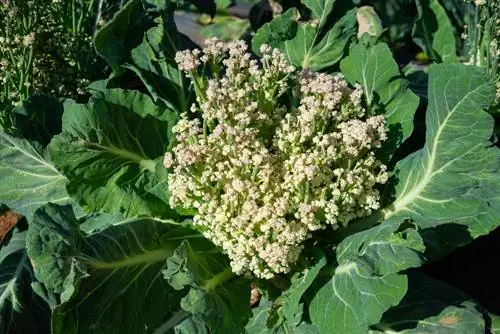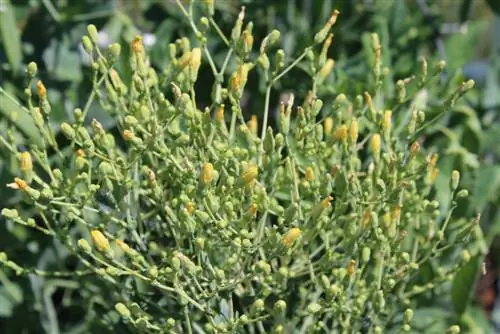- Author admin [email protected].
- Public 2023-12-16 16:46.
- Last modified 2025-01-23 11:22.
Kohlrabi is a productive vegetable and is easy to grow in the garden. However, cruciferous plants tend to shoot prematurely if care is incorrect. The location also plays an important role in he althy growth.

Why does kohlrabi shoot and how can you prevent it?
Kohlrabi shoots due to unfavorable environmental conditions such as sudden cold periods, plants planted too closely, over-fertilization or irregular water supply. To prevent shooting, cultivate seedlings at 14-18 degrees, avoid direct sunlight, ensure a minimum distance of 30 cm in the bed and ensure an even supply of water and nutrients.
How kohlrabi grows
This vegetable grows as a biennial plant that develops a thickened sprout in the year it is grown. The following season, a branched inflorescence appears on which pods form. The crop is harvested in the first growing season.
Negative influencing factors
If the environmental conditions are not right, shooting occurs. If cold periods suddenly occur after planting, the plants are given the impression that winter is coming. This cold stimulus causes rapid flower development. Plants that are planted too closely compete for light, so they also shoot up and develop flowers more quickly. Other factors include over-fertilization and irregularities in the water supply.
Observe requirements
Kohlrabi thrives on deep soil that is rich in nutrients and can store water. Uniform soil moisture is important for a lush and he althy harvest. Mulch the bed to prevent excessive water evaporation. The vegetable prefers sunny locations.
Avoid growth disorders
Kohlrabi tends to shoot more often if you grow young plants yourself from seeds. This shows how important optimal environmental conditions are in the early growth phase. During the growing season, cruciferous vegetables value a consistent supply of water and nutrients. Nettle manure and horn meal (€14.00 on Amazon) are ideal fertilizers.
This is what you can do:
- Cultivate seedlings in a bright place at 14 to 18 degrees
- Avoid direct sunlight
- Plant out young plants when the thermometer permanently rises above ten degrees
- Make sure there is a minimum distance of 30 centimeters in the bed
- provide water evenly during growth
- Better to fertilize several times in low concentrations than once in high doses
How to harvest correctly
Kohlrabi has a long planting time. The harvest period extends from April to October and depends on the variety chosen and the cultivation date. There are usually six to twelve weeks between planting and harvest. Breeds with large vegetable tubers require more time to develop than small-tuber cultivars.
When the tubers are ripe
With the exception of large-tuber specimens such as those produced by the 'Super Schmelz' variety, the sprout tubers are ready to harvest when they reach the size of a tennis ball. The plants have brightly colored and he althy leaves that shine in rich green or purple. The earlier you harvest, the more tender the vegetables taste. At this stage it is well suited to raw food dishes. The crop yields increase as the growth phase continues. However, the tissue takes on a firm consistency and becomes increasingly woody.
Tip
Cut off the tuberous, thickened shoots directly above the ground. This way the roots can overwinter and sprout again next year.






